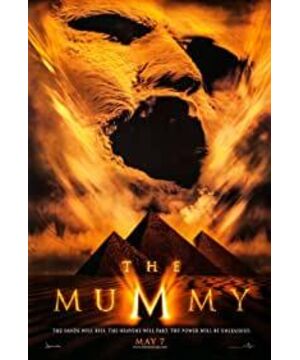Excerpted from the world of "Global History-Before and After 1500"
The emergence of Egyptian civilization is largely due to the earliest civilizations formed in the Tigris and Euphrates river basins. It is generally believed that there are two areas that connect and influence the locations of these two civilizations. One is between the Nile and the Red Sea, where there are gold mines that attract Sumerian merchants; the other is in Lebanon, where there is Egypt. The wood that people need. In the subsequent trade process, the Egyptians learned about the Sumerian civilization and were deeply inspired to accelerate the functioning of certain forces that have had an impact in their watershed area, thereby promoting the early arrival of civilization. However, the civilization created by the Egyptians is by no means a replica of the Sumerian civilization. Egyptian civilization reflects the unique characteristics of the Egyptians and their natural environment, and therefore has its own characteristics.
The Nile River Basin is different from Mesopotamia. It has the Libyan Desert to the west, the Arabian Desert to the east, the Nubian Desert and the cascading waterfalls to the south, and the harbourless coast of the delta to the north. These natural barriers make it particularly well protected, and it is not easy to be violated by foreigners. The Egyptians live in this safe watershed area and can freely arrange their own destiny. They don’t have to deal with the flood-like invasions of Semites or Indo-Europeans from time to time, so they can maintain their race from the time of the Pharaohs to today. The peasants on both sides of the Nile River are now very similar to the figures carved or painted on ancient temples and pyramids. They are all short stature, thin physique, straight black hair, deep-set eyes, and slightly hooked noses.
The environment-protected life in Egypt not only creates conditions for ethnic stability, but also political stability. Egypt does not have a kaleidoscope of empire changes caused by foreign invasions from time to time. On the contrary, the Nile River is like a natural tie, connecting the entire basin area into a stable and effective whole. The gentle rivers of the Nile make it easy to sail north, and the prevailing north and northwest winds make the return easy. As a result, the Egyptians possessed extremely valuable means of reliable transportation, which promoted the unification of the entire basin region around 3100 BC.
In the previous centuries, the earliest farmers in Egypt began to cultivate on the banks of the Nile just as the pioneers of agriculture in Mesopotamia did earlier. The fertile new farmland produced a large amount of surplus products, enough to support the various skilled people who soon gathered in the cities. Egypt formed two independent kingdoms-the Kingdom of Lower Egypt and the Kingdom of Upper Egypt. Each kingdom consists of approximately 20 provinces or states. Around 3100 BC, the king of Upper Egypt, Menis, unified the upper and lower Egypt and began the dynasty period known in history. At this time, Egypt already possessed the basic characteristics of civilization, including not only full-time administrative officials, soldiers, religious leaders, and entertainers, but also writing.
Significant political continuity is the main feature of the dynasty period. Generally speaking, the ancient kingdom includes six dynasties, which lasted for more than eight centuries from 3100 to 2270 BC. Such a long period of political stability cannot be found in the chronicles of Mesopotamia. Near the end of the Sixth Dynasty, the king's power was no longer absolute, and increasingly challenged by independent state governors. As a result, there was a period of riots, known in history as the "First Intermediate Period" (2270-2060 BC). Separate governors act as independent monarchs and compete for the support of the nobles. Invaders from Libya and Asia took the opportunity to invade Egypt. Finally, the eleventh dynasty gradually restored Egypt's reunification and entered the second political recession period, the Middle Kingdom period (2060-1785 BC). The history of Egypt repeats itself as it did in the past, but the process of repeating it is significantly shortened. Less than three centuries passed; Egypt began to experience the "Second Intermediate Period" (1785-1580 BC). During this period, Egypt was invaded, and for the first time was conquered by the Hixos fighting by car. In the second millennium BC, some ethnic groups ravaged the centers of civilization in Eurasia, and the Hiksos were only a tribe that participated in this kind of aggression.
Egyptian civilization is generally stable and conservative, but it is by no means static. In the 15 centuries from the unification of Egypt by King Menes to the invasion of the Hiksos, many changes have taken place in Egyptian systems and customs. However, there are certain characteristics that have always been maintained. For example, the Egyptians, in contrast to the Sumerians, generally hold a confident and optimistic worldview. Just as the annual flooding of the Tigris and Euphrates rivers is unpredictable and fierce, which contributes to the insecurity and pessimism of the Sumerians, the annual flooding of the Nile is predictable and the trend is gentle, thus contributing to the confidence and optimism of the Egyptians. The Sumerians regarded their god of the flood as an evil god, while the Egyptians regarded their god of the flood as a god who "will bring joy to everyone". An ancient Egyptian poet described the charity of the river that gave life to all things like this:
Look, this great monarch,
Neither tax us,
And don't force us to do hard labor,
Can anyone not be surprised?
Anyone,
Said to be loyal to his subjects,
Can it keep its promises?
Look,
How timely he kept his promises,
How generous to give gifts!
He gave gifts to everyone,
Up Egypt, down Egypt,
The poor, the rich,
The strong, the weak,
No distinction, no favoritism.
These are his gifts,
More precious than gold and silver. ...
The religious beliefs and customs of the Egyptians are very complicated. It consists of many elements-the worship of natural forces, the local sects worshiping their respective city gods and state gods, and gradually formed beliefs in priest groups. They came from abroad, especially from the East. The various influences-composition. Now, there are at least 2000
The names of these gods are known to us, but none of these gods can be completely obeyed or awed by their worshippers. The Egyptians believed that they could avoid or manipulate God for personal or public benefit; they could turn to God for moral or immoral purposes. Therefore, the implementation of complex religious rituals in temples is an activity of worshipping gods, and it is also an activity of chanting mantras and asking for help from the gods. During the reign of the later dynasties, the idea that the upright and kind in this life can obtain eternal afterlife has gradually developed. However, apart from some notable exceptions, there is very little moral content in Egyptian religion. Moreover, their mythology and theology lack coherence, because the Egyptians are generally not interested in the origins, characteristics, and relationships of their gods.
Caring for death and preparing materially for the next life—especially the afterlife of the king—is a major feature of Egyptian religious beliefs. Because the king’s death was not the final outcome, the king used sesame oil and other medicinal materials to embalm the corpse, and then put the corpse together with food and other necessities into the huge tomb, the pyramid. Among the pyramids, the Pyramid of the Fourth Dynasty Pharaoh Hu Fu is the largest. The bottom of the tower occupies an area of 13 acres and the tower is 481 feet high. The entire tower is made of about 2,300,000 boulders, each weighing about 2.5 tons on average. This pyramid was built with the simplest tools: ramps, rollers and levers; there were not even iron pulleys at that time!
It is said that Egyptian farmers were very enthusiastic when they built these pyramids, and believed that they were building a mansion for a god who could determine their common happiness. Regardless of the reason for this statement—perhaps it is conceivable that regardless of whether the Egyptian farmers are enthusiastic about building pyramids, they have no choice in this matter—this statement indeed strongly suggests that it is still speculation. The mighty power of the Egyptian kingship. The pharaoh is always considered to be the king of gods, and the notion that there is no difference between a sacred pharaoh and a secular pharaoh is really puzzling. For this reason, Egypt does not have any laws corresponding to the codes of Mesopotamia. Pharaoh is a god king; his power is also deified, and his words are the law.
The royal power was strengthened by a bureaucracy headed by the "steward of the country" and "the eyes and ears of the king", the prime minister. The officials under the Prime Minister are: the Minister of Seal (in charge of the transportation of the Nile), the Minister of Reward (in charge of all livestock), and the Minister of Finance (in charge of the country's financial branches; each branch has no warehouses and is responsible for collecting taxes. In bad times, it is also responsible for allocating seeds and livestock). The governors of the states and their subordinates managed the city and surrounding villages. The market test is similar to that of other empires. The local governors gradually accumulated a large amount of property and became a hereditary bureaucratic class: They strengthened their power and status, and finally confronted the central government openly. The division of the ancient three kingdoms and the chaos that lasted for several centuries can be explained to a large extent by this. The pharaohs of the Middle Kingdom never restored their original authoritarian power. Although the pharaohs were generally still covered with a sacred halo, they discovered that in fact their power had to be shared with the priests and nobles. Therefore; the Middle Kingdom period is sometimes referred to as the feudal era of Egypt, but the powerful bureaucracy did suppress the nobility.
The state's absolute control over economic life is the last characteristic of Egyptian civilization. Although there were private property and private enterprises at the time, they were not as common as in Mesopotamia. The state not only controls most of the production of agriculture and handicrafts, but is also responsible for the distribution of products. The huge national treasury and government granary were filled with taxes collected in kind: grains, livestock, cloth, and various metals; they were used to pay for the country’s expenditures, and they were also used as reserves in famine years. It is said that "the king is responsible for all food supplies." In addition to the place where taxes are paid, each village has to send men to perform corvee, that is, compulsory labor. The pyramid is the most famous work of these laborers, who are also sent to quarry, mine and repair irrigation ditches.
The skills of Egyptian craftsmen, especially the skills of making luxury goods, are universally recognized. The jewellery they made is so exquisite that it has hardly been surpassed today. Their enamel products and ivory. The pearl inlays are also very delicate. They invented the coloring of glass and were the first to tanned leather. The method of tanning is still used in most parts of the world. The linen they weave is very even, not inferior to what people do today. The Egyptians may have invented beauty products and developed the technology of making beauty products very early. Their medical literature describes ways to eliminate wrinkles and dye black and gray hair. The items used for makeup include: makeup ink for drawing eyebrows and corners of eyes, malachite and booze to draw eye circles into green and gray, red ocher for rouge or lipstick, and spray flowers for dyeing nails, palms and soles of the feet. Human hair for wigs (the top of this wig is sealed with melted beeswax), etc. The ladies and ladies who wish to dress themselves the most fashionable also paint their breasts with gold and their nipples with blue.
View more about The Mummy reviews











